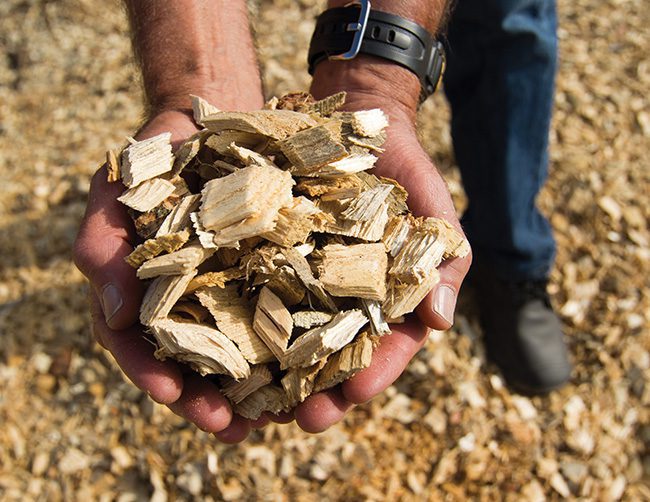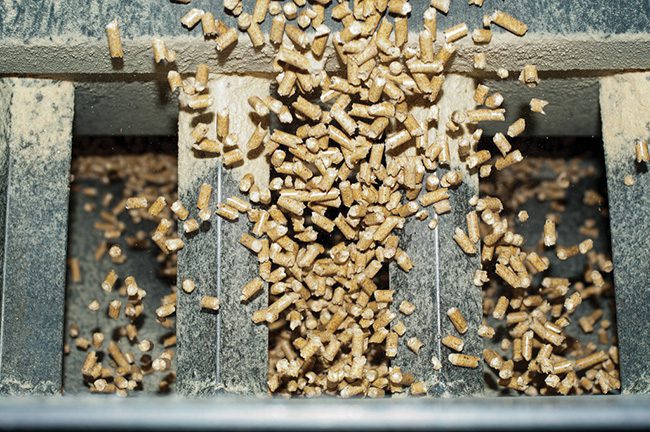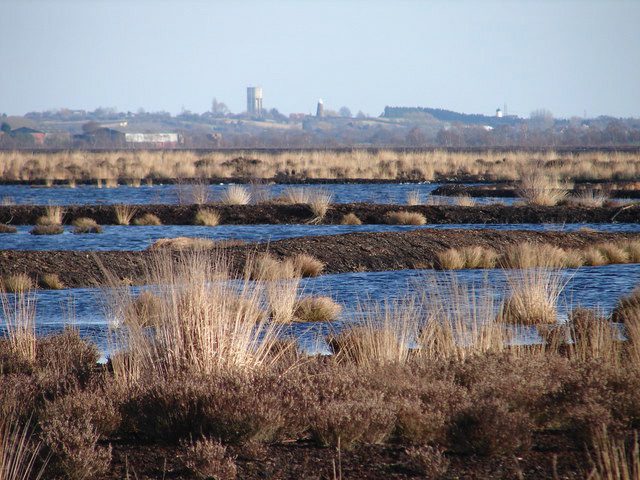Biomass Power: Environmental Benefit or Numbers Game?

Many bioenergy industry proponents put forth carbon neutrality as a basis for their support. However, the claim may not hold up under scrutiny. By some accounts, biomass power plant emissions including those produced while growing, harvesting, and processing fuel, can exceed emissions from fossil-fired generating units.
Biomass power is the hottest thing in Europe today. Literally. About 60% of the UK and the European Union's (EU's) renewable electricity is now generated by burning wood pellets-mostly in retired coal-fired plants-made from trees harvested in the U.S. Other major countries heavily into coal combustion, including China, South Korea, and Japan, are looking at moving to wood combustion to reduce greenhouse gas emissions from their coal-fired plants.
Nor is converting living trees into a generating fuel the only way to use biomass in electric generation. The Department of Energy's (DOE's) Energy Information Administration (EIA) cites four sources for biomass energy:
- Wood and wood processing wastes, such as firewood, wood pellets, and wood chips; lumber and furniture mill sawdust and waste; and black liquor from pulp and paper mills.
- Agricultural crops and waste materials, including corn, soybeans, sugar cane, switchgrass, woody plants, algae, and crop and food processing residues.
- Biogenic materials in municipal solid waste, such as paper, cotton, and wool products, and food, yard, and wood wastes.
- Animal manure and human sewage.
According to the EIA, biomass gets turned into energy by burning to produce heat, such as heating with firewood or burning in power plants; thermochemical conversion into solid, gaseous, and liquid fuels; chemical conversion into liquid fuels; and biological conversion to produce liquid and gaseous fuels, such as landfill methane.
The EIA noted in its December 2021 Short-Term Energy Outlook that the U.S. electric power sector was expected to have 6,154 MW of biomass power capacity in place at the end of 2021, including 3,793 MW of waste biomass capacity and 2,362 MW of wood biomass capacity. Biomass capacity is expected to increase to 6,190 MW by the end of 2022, including 3,829 MW of wood biomass capacity and 2,362 MW of waste biomass capacity. Biomass capacity was at 6,295 MW at the end of 2020, including 3,790 MW of waste biomass capacity and 2,505 MW of wood biomass capacity.
Biomass: Original Form of Useful EnergyThere is nothing new about producing energy from biomass (Figure 1). It is as old as humankind, starting with fire. Greek mythology says Prometheus stole fire from the gods and gave it to humanity, although fire far predated the Greeks. It was a revolutionary technology, allowing for heat, cooking, and other uses. For much of human history, burning biomass drove useful energy. Coal arrived in England because cutting trees for fuel denuded much of the country's once-plentiful forests.
 |
1. Forest management, fuels reduction, forest restoration, and wood products manufacturing all produce material known as woody biomass. As a by-product of forestry or manufacturing processes, the use of biomass adds value to these activities. Source: Oregon Department of Forestry |
Coal, of course, was another revolutionary technology, fueling the industrial revolution and the rise of long-distance land transportation. But coal is no longer king due to environmental concerns, which are increasingly affecting all fossil fuels.
Why Biomass?The Biomass Power Association, a Washington, D.C.-based lobbying group for the biopower industry, touts its technology: Biomass power uses these natural materials to generate clean, renewable electricity, while reducing greenhouse gas emissions. Biomass offers significant other environmental and consumer benefits, including improving forest health, protecting air quality, and offering the most dependable renewable energy source." Citing EIA figures, the group says biomass produces 45% of total U.S. renewable energy.
The key to the industry's claim that biopower helps the environment is carbon neutrality," the concept that carbon sinks," such as forests, can counter carbon sources," such as combustion of fuels. All combustion of biomass-for power, heat, or other uses-produces carbon dioxide. Biomass, argue its supporters, is carbon neutral because planting trees to replace the harvested biomass will absorb carbon (see sidebar), offsetting the emissions. A November 2020 report from the World Bioenergy Association says that markets ensure only low-value fiber is used for sustainable bioenergy."
| Carbon Sinks? Peat-and Repeat Lowly, soggy, acidic peat, found in bogs around the world, could be an increasingly important way to store carbon dioxide from man-made emissions, according to Christian Dunn, a wetlands scientist at Bangor University in Wales. He told The Washington Post recently, If you're serious about slowing climate change, you must get serious about peat." And that means, among other things, not buying it for garden mulch. According to Dunn, when it comes to sucking up carbon dioxide, peat is the superhero of the natural world." He calculates peatlands (Figure 2) occupy about 3% of the earth's land surface but store about 30% of all the carbon in the soil, far more than trees and other vegetation.
Added Dunn, For generations we've drained wetlands. We've degraded the peat-trashed it, burned it, bagged it-and released just staggering amounts of carbon into our atmosphere." Ireland and Scotland have long burned peat as a heating fuel. Ireland has used peat rather than coal in power plants. Rwanda recently opened a 15-MW peat-fired power plant. In many countries, a focus of government has been to remove peat bogs to develop more agricultural land. Dunn calls that practice almost criminal." What to do? Stop destroying peatlands, said Dunn, and instead restore them. Britain sees peat as important in meeting its goal of net-zero emissions by 2050. UK Prime Minister Boris Johnson has announced a goal of restoring 690,000 acres of peatland by 2050. That's more than the size of Rhode Island. Scotland-less land but more peat-has a goal of 618,000 restored acres by 2030. |
The DOE's National Renewable Energy Laboratory, in a paper on the benefits of biomass, offers a caveat to the carbon neutrality claim. Burning biomass releases about the same amount of carbon dioxide as burning fossil fuels," the paper says. However, fossil fuels release carbon dioxide captured by photosynthesis millions of years ago-an essentially new' greenhouse gas. Biomass, on the other hand, releases carbon dioxide that is largely balanced by the carbon dioxide captured in its own growth (depending how much energy was used to grow, harvest, and process the fuel). However, studies have found that clearing forests to grow biomass results in a carbon penalty that takes decades to recoup, so it is best if biomass is grown on previously cleared land, such as under-utilized farmland."
An environmental pushback on biomass power has been gathering steam for several years. In 2017, British think tank Chatham House published a study that found, Although most renewable energy policy frameworks treat biomass as though it is carbon-neutral at the point of combustion, in reality this cannot be assumed, as biomass emits more carbon per unit of energy than most fossil fuels. Only residues that would otherwise have been burnt as waste or would have been left in the forest and decayed rapidly can be considered to be carbon-neutral over the short to medium term."
In March 2020, a group of nine climate experts, led by Timothy Searchinger, a lawyer who is a research scholar at Princeton University's Woodrow Wilson School and a senior fellow at the World Resources Institute, sent a letter to Japan's Ministry of Energy, Trade, and Industry cautioning against a move to wood pellets as a generating fuel. Japan was considering making a major switch to wood from coal. Among the signatories were Daniel Kammen of the University of California, Berkeley and former Department of State science envoy, and Peter Raven, former president of the American Association for the Advancement of Science and a recipient of the U.S. National Medal of Science.
The letter advised the Japanese government that based on the scientific evidence, We strongly discourage Japan from subsidizing in any way the use of wood other than true wastes and residues for bioenergy, and particularly in power plants. In addition, the smokestack emissions from burning wood harvested for bioenergy use should be counted in any law that counts greenhouse gases or in other ways is designed to those gases."
The criticism of biomass power picked up during the runup to last November's United Nations Climate Change Conference (COP26) in Glasgow, Scotland. While more than 130 countries at the Glasgow meeting pledged to end deforestation by 2030, the pledge was unaccompanied by details, characteristic of much of the international commitments to combating global warming over the years.
Carbon Emissions Rivaling Fossil FuelsIn October, the Natural Resources Defense Council (NRDC) unveiled a study debunking forest biomass carbon neutrality. Focusing on the wood pellets from forests in the Southeastern U.S. (Figure 3), the environmental group concluded, Carbon emissions over the pellets' lifecycle far exceed the average emissions of power generation in the U.S., even if carbon capture and storage was added to power plants."
 |
3. In the past decade, wood pellet manufacturing capacity in the Southeastern U.S. has grown from almost nothing to 23 mills with the capacity to produce more than 10 million metric tons annually, much of it for export. Source: Oregon Department of Forestry |
A separate NRDC report on the eve of COP26 called on the UK to cease subsidizing the use of wood pellets at its Drax power station in North Yorkshire. The plant in the middle of England's extensive coal fields, and the largest electric generator in the UK, has largely converted to wood pellets. It now has a generating capacity of 2.6 GW of biomass and 1.29 GW of coal capacity.
Citing a report from the environmental think tank Ember, the NRDC said that beginning in 2019, carbon emissions from burning biomass in the UK electricity sector exceeded those from coal and were second only to those from burning gas. In other words, an energy source many governments have deemed renewable' is a top polluter."
In the UK and the EU, the move toward wood pellets has been driven by an accounting rule. A Washington Post article just ahead of COP26 called it dendrological slight-of-hand." The way it works, explained Princeton's Searchinger, is that under Europe's carbon trading rules, established in 2005, burning wood pellets reduces a utility's emissions fees in the trading scheme, but it doesn't reduce the actual emissions. Thus, it pays to burn pellets, even if it doesn't reduce CO2 emissions in the short term. Whether that will change as governments dive deeper into the details of greenhouse gas emissions, and carbon sources and sinks, in the aftermath of COP26 is an open question.
-Kennedy Maizeis a veteran energy journalist and frequent contributor to POWER magazine.
The post Biomass Power: Environmental Benefit or Numbers Game? appeared first on POWER Magazine.
